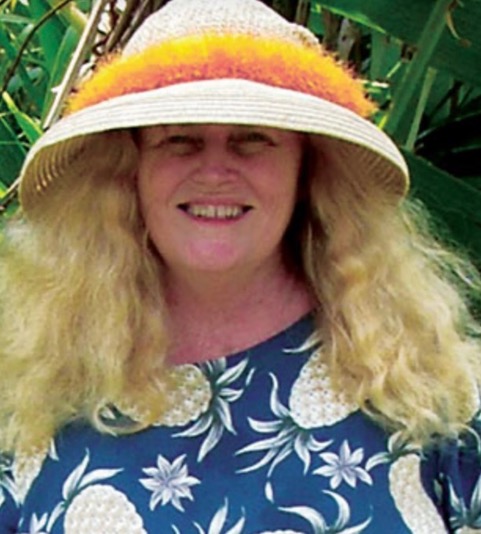A Voice for Kaʻu Is Lost: On January 24, Julia Neal, founder and editor of the Kaʻu Calendar, passed away in Pahala. In 2002, she founded the newspaper, which was distributed in print to residents of the Kaʻu District on the Big Island. The newspaper and the associated on-line Kaʻu News gave residents local news, increasingly hard to come by when the two Big Island dailies have cut staff and rarely cover events in the rural areas of the county. With her death, the Kaʻu Calendar will be closed. Its last issue will be published on February 14.
The most recent postings included a report on a community meeting on filing land claims, news of a Naʻalehu woman’s gold medal for a win in her age class of a national track-and-field competition, an announcement of a poetry contest to celebrate Volcano Month, and a coming presentation at the Naʻalehu Community Center on the Cultural Evolution of Lua.
Neal’s work helped the community strengthen ties at a time when many much larger publications seem to have abandoned any interest in that mission. She will be missed.
Papahanaumokuakea Sanctuary: On January 16, the Federal Register carried a notice stating that the Papahanaumokuakea Marine National Monument has been designated a national marine sanctuary. The monument already protected waters around the Northwestern Hawaiian Islands out to the limit of federal waters. The sanctuary will encompass all that, in addition to the waters of the Midway Atoll National Wildlife Refuge and the Hawaiian Islands National Wildlife Refuge. Altogether, the area included in the sanctuary comes to 582,570 square miles.
No commercial fishing is allowed. The final rule “exempts non-commercial fishing … provided that certain requirements are satisfied. Those requirements are that the fish harvested, either in whole or in part: (1) are not intended to enter commerce and shall not enter commerce through sale, barter, or trade, and that the resource is managed sustainably; and (2) are not intended to be sold and shall not be sold for any purposes, including, but not limited to, cost-recovery.”
“Sustenance fishing” for bottomfish or pelagic species is allowed, if all catch is consumed within the sanctuary.
Permits are to be granted for Native Hawaiian practices, subject to several conditions. Those include that the activity is non-commercial and that “the purpose and intent of this activity is appropriate and deemed necessary by traditional standards in the Native Hawaiian culture (pono), and demonstrates an understanding of, and background in, the traditional practice and its associated values and protocols.” Also, any living resource taken in the sanctuary must be consumed in the sanctuary, and the activity “supports or advances the perpetuation of traditional knowledge and ancestral connections of Native Hawaiians to the Northwestern Hawaiian Islands.”
According to NOAA, the sanctuary’s marine habitat “includes several interconnected ecosystems, including coral islands surrounded by shallow reef, deeper reef habitat characterized by seamounts, banks, and shoals, mesophotic reefs with extensive algal beds, pelagic waters connected to the greater North Pacific Ocean, and deep-water habitats such as abyssal plains 5,000 meters below sea level.”
The sanctuary provides essential habitat for rare species, including the threatened green sea turtle, the endangered Hawaiian monk seal, and more than 14 million seabirds. Twenty species of whales and dolphins are found in the waters of the sanctuary. Of the 7,000 known marine species found in the area, at least a quarter of them are found nowhere else on Earth.
“The area of the sanctuary is also a sacred place to Native Hawaiians, who regard the islands and wildlife as kupuna, or ancestors,” NOAA stated in the notice.
The designation does not become effective until the end of a review period. That review period starts on the date the notice is published (January 16) and concludes “after the close of … forty-five days of continuous session of Congress.” In that period, the governor of Hawaiʻi “may certify to the Secretary of Commerce that the designation or any of its terms is unacceptable, in which case the designation or any unacceptable term shall not take effect in state waters of the sanctuary.”
Environment Hawaiʻi asked Governor Green’s office if he would be objecting to the designation. No response was received by press time.


Leave a Reply